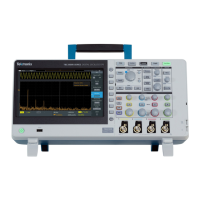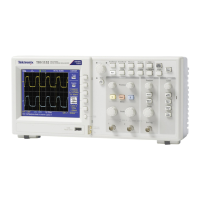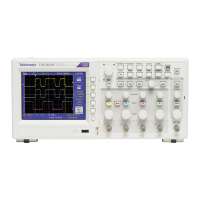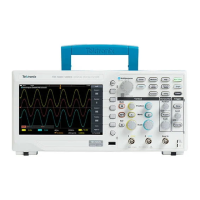Table 10: FFT windows
Window type Window ‘shape’
Hanning
This is a very good window for measuring amplitude accuracy but
less so for resolving frequencies.
Use Hanning for measuring sine, periodic, and narrow band
random noise. This window works on transients or bursts where the
signal levels before and after the event are significantly different.
Rectangular
This is the best type of window for resolving frequencies that are
very close to the same value but worst for accurately measuring
the amplitude of those frequencies. It is the best type for measuring
the frequency spectrum of nonrepetitive signals and measuring
frequency components near DC.
Use Rectangular for measuring transients or bursts where the
signal level before and after the event are almost equal. Also, use
this window for equal-amplitude sine waves with frequencies that
are very close, and for broadband random noise with a relatively
slow varying spectrum.
Hamming
This is a very good window for resolving frequencies that are very
close to the same value with somewhat improved amplitude
accuracy over the rectangular window. It has a slightly better
frequency resolution than the Hanning.
Use Hamming for measuring sine, periodic, and narrow band
random noise. This window works on transients or bursts where the
signal levels before and after the event are significantly different.
Blackman-Harris
This is the best window for measuring the amplitude of frequencies
but worst at resolving frequencies.
Use Blackman-Harris for measuring predominantly single
frequency waveforms to look for higher order harmonics.
Analyzing a waveform
118 TBS2000B Series Oscilloscopes User Manual

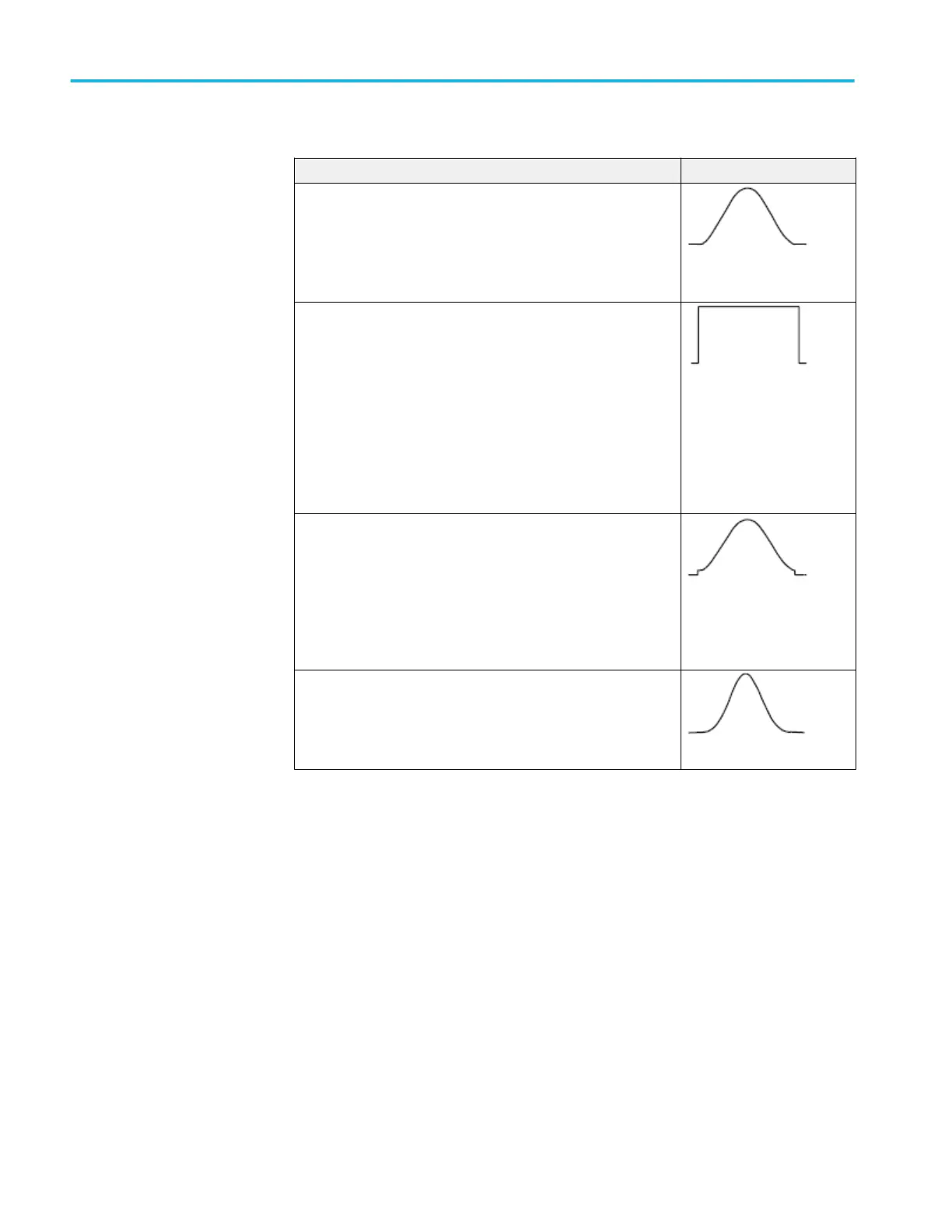